‘‘Hidai Nankoku Exhibition" was held at Tokyo Gallery+BTAP from October 5 to November 16,2024. The following short paper was furnished to visitors at this exhibition.
Nankoku's Method of Line Expression and Development of his Works
Ⅰ.Spirit Line Work "Variations on Lightning" - "Return to the "Origin”
“I would write bizarre lines and dots to create a pile of waste papers, and when people came, I would rush to put them away. This continued for some time, until I suddenly remembered my father’s admonition, ‘If you come to an impasse, return to the origin.’ I remembered ‘ku-wen’ (ancient script) and began leafing through the “Gu zhou hui bian”, a dictionary of ku-wen. The character ‘den’ (‘tien’ in Chinese, lightning) attracted me in a curious way and I developed it with enthusiasm. The result was Spirit Line Work No.1,“Variation on Den”.

No. 6 "Kanae(Ding)and Yi(Funeral)”(1947) Paper+Sumi(ink) (44×44)
【reference works】

Spirit Line Work No. 1 "Variations on Den " (1945) Paper+Sumi (42×63) (Chiba City Museum of Art)
Ⅱ. Exploring Various Materials
In 1954, Nankoku insisted, "Since the artistic essence of calligraphy lies in the expression of disciplined brush line, the materials in use (such as brushes, ink, and paper) are mere mediums." To prove this, Nankoku used canvas and board, which were the supports for oil paintings, or fiberboard instead of paper and using oil and lacquer instead of ink. He also experimented with a variety of materials, such as a work in which a board coated with oil paint was scratched not with a brush, but with a piece of bamboo or a piece of tire.
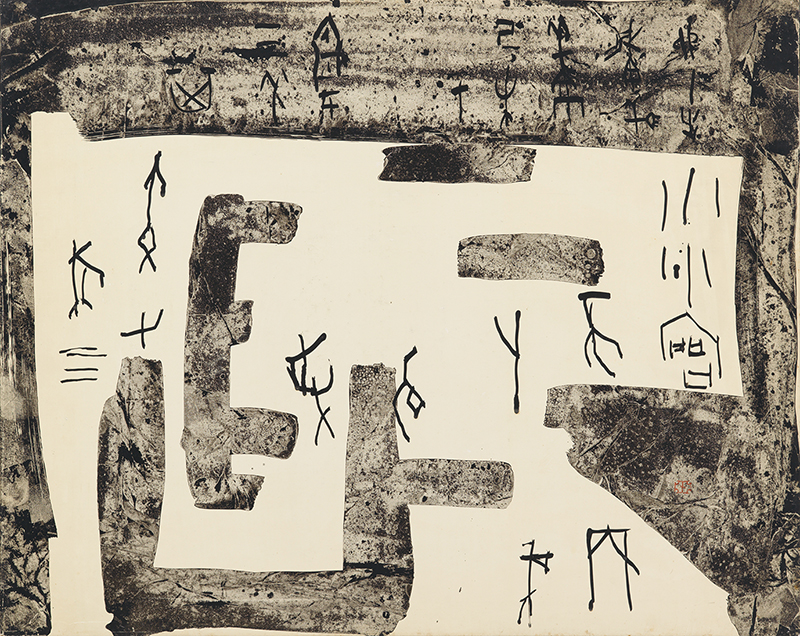
No.36(1956) Fiberboard +Sumi(73×91)
【reference works】
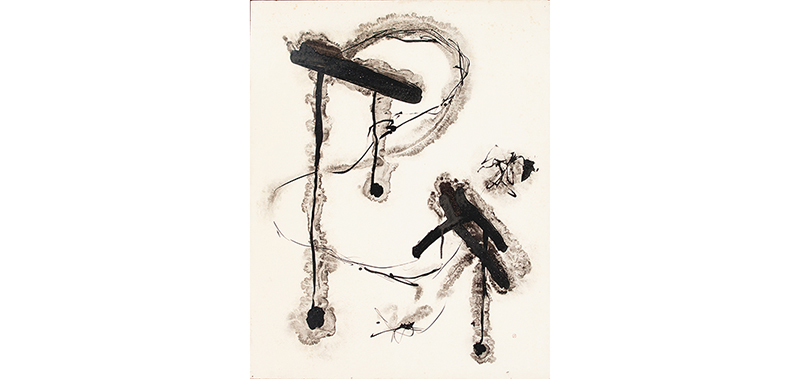
No.26(1956) Fiberboard+Sumi (91×73) (M+Hong Kong)
Ⅲ.The Challenge of Three-Dimensional Calligraphy: From Oil Paint to "Mysterious Ink"
It is necessary to establish the flexible movement of the brush on the paper so that the brush lines can express the humanity of the artist. Just before his first trip to the U.S. in 1959, he acquired a large Chinese ink. One day, when he rubbed and mixed other inks into this old ink, the ink solution suddenly decomposed and condensed. When he tried to write with a brush putting on it, the lines represented a subtle and deep movement different from the previous oil paint and benzine. Not only that, but when it dried, the movement of the brush lines when writing was fixed on the paper as it was. It was an ink which ideally realized the movement of the lines that he had been dreaming about and experimenting with.

60-1 (1960) Paper+Sumi (22.8×17.2) scroll
【reference works】
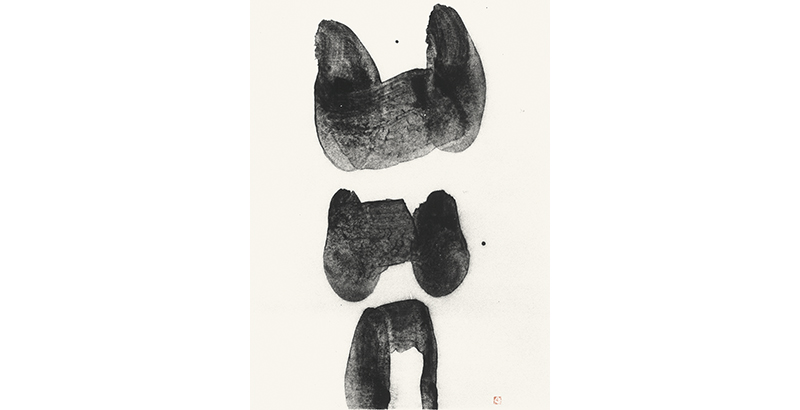
59-42 (1959) Paper+Sumi (69×55) (The Museum of Modern Art, NewYork)
Ⅳ.The correspondence between the line and the space
From 1960 while staying in the U.S. to 1961 after his return to Japan, Nankoku's works changed drastically. The precedent dynamism of the thick, blotted lines faded, and the thin, reduced lines and dots were written in such a way that they left traces of meteors in white space. "I got tired of the sturdy phase, and at the same time, I became more concerned about space," he said.
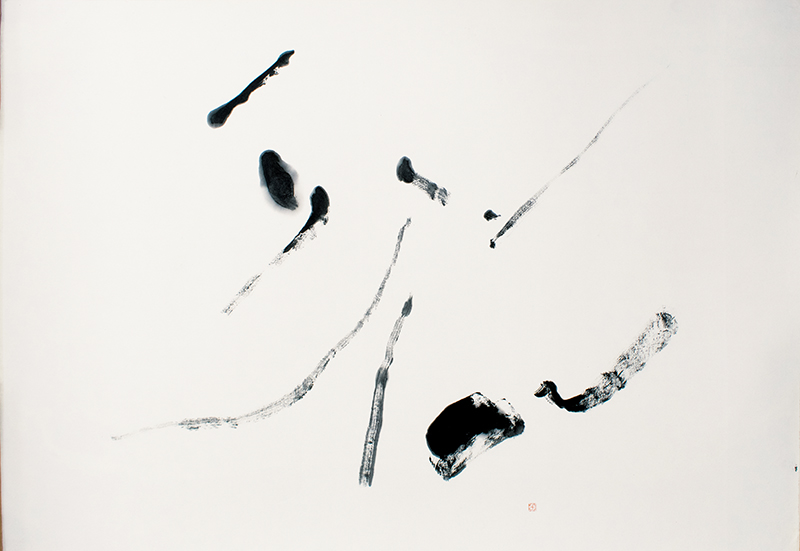
61-3(1961) Paper+Sumi(77×109)
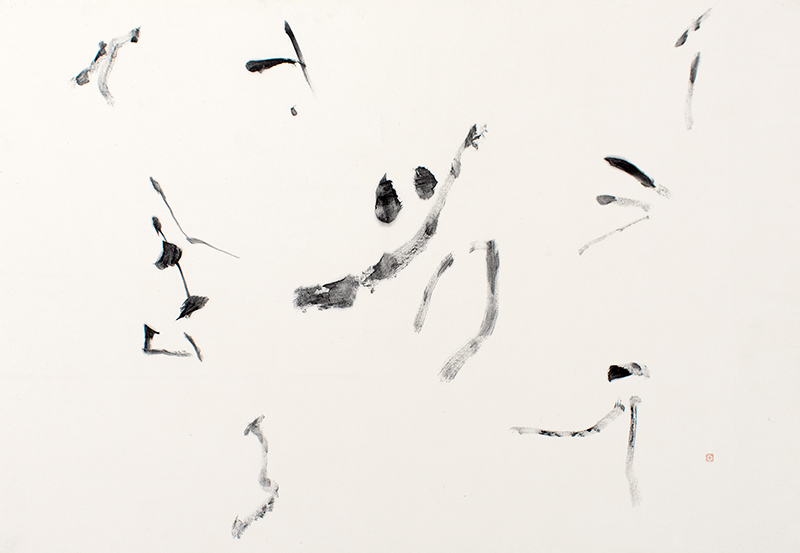
61-5(1961) Paper+Sumi(77×108)
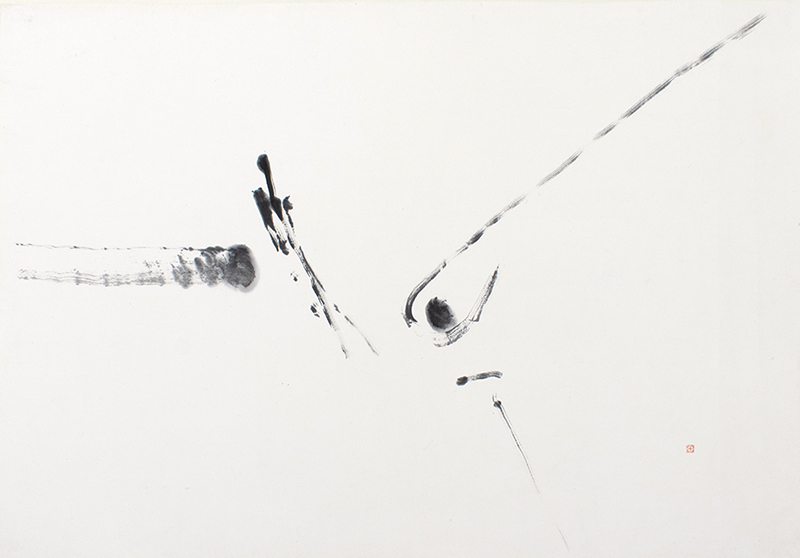
61-6(1961) Paper+Sumi(77×108)
【reference works】
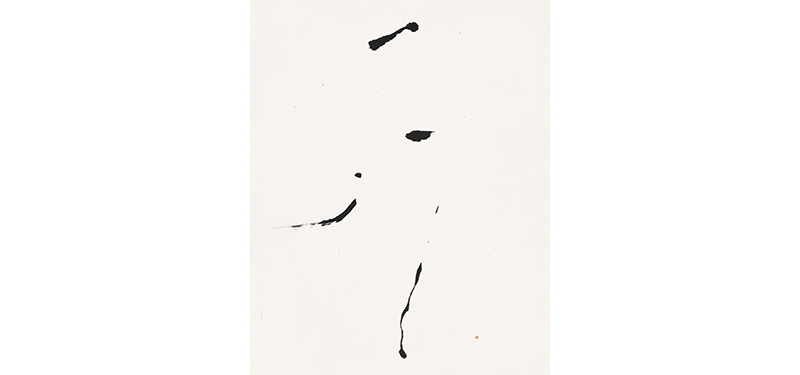
61-2(1961) Paper+Sumi(110×79) The Saku City Tenrai Museum
Ⅴ.Three-dimensional composition with powerful lines
From 1961 to 1964, he returned to the strange effect of old ink and began to produce many works one after another. The characteristic of these works is the three-dimensional composition of bold and powerful lines with a strong constructive force, which continues long into the future. In these works, he tried to incorporate the kind of stroke order found in traditional calligraphy.
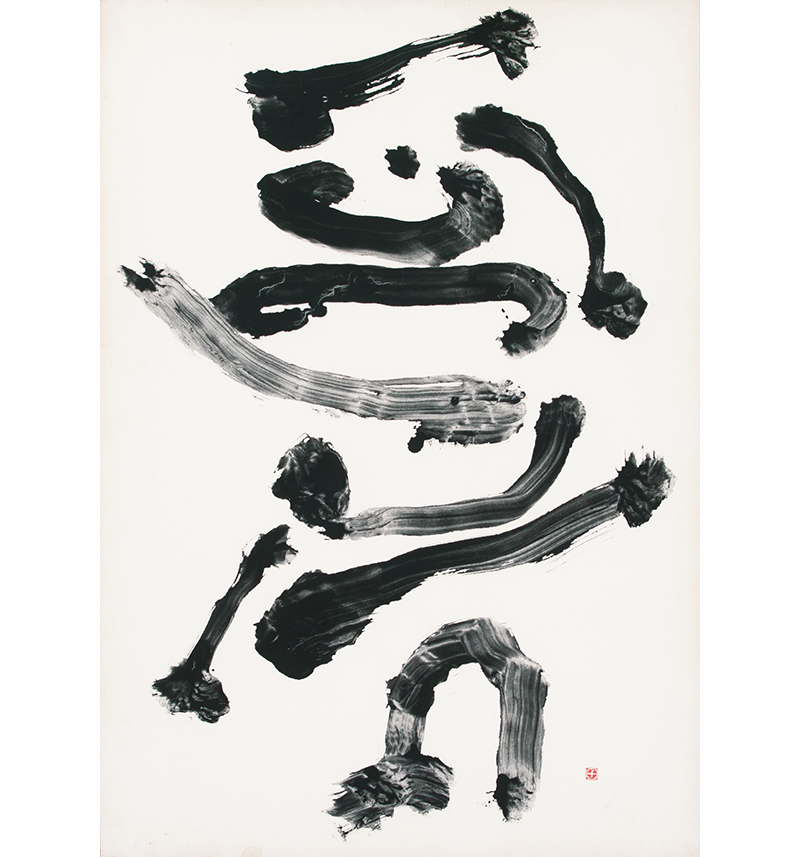
63-3(1963) Paper(torinoko-gami)+Sumi(88×62)
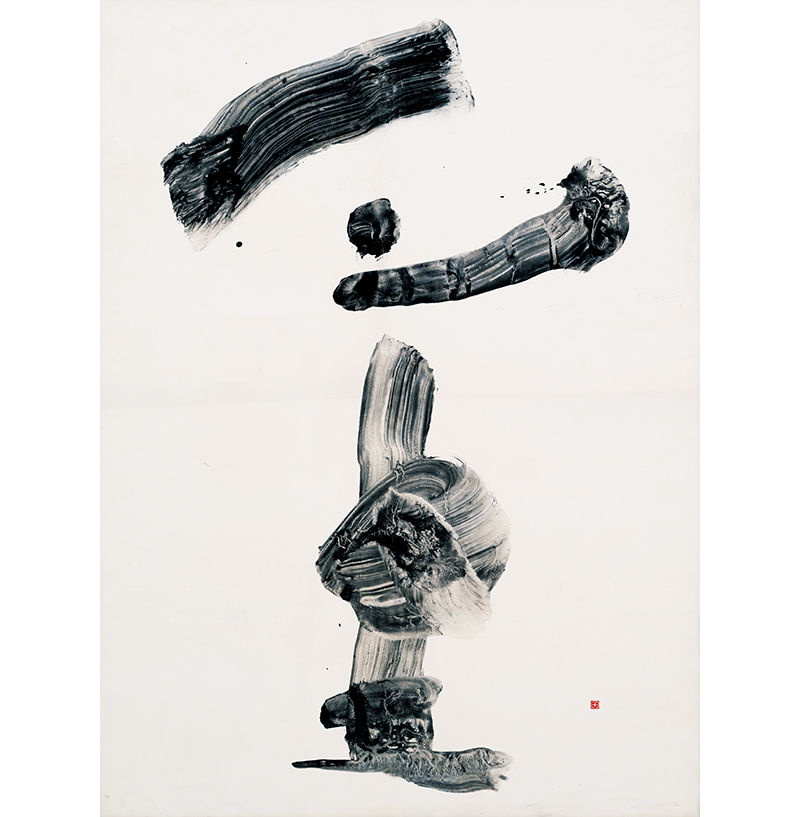
63-14(1963) Paper(torinoko-gami)+Sumi(122.8×90)
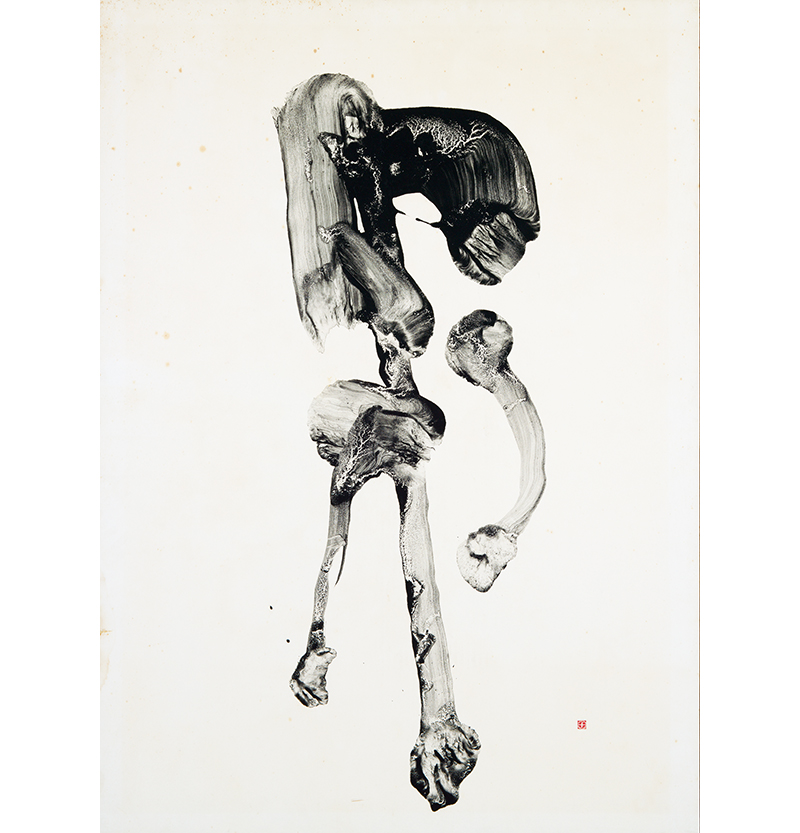
64-13(1964) Paper(torinoko-gami)+Sumi(118×84.5)
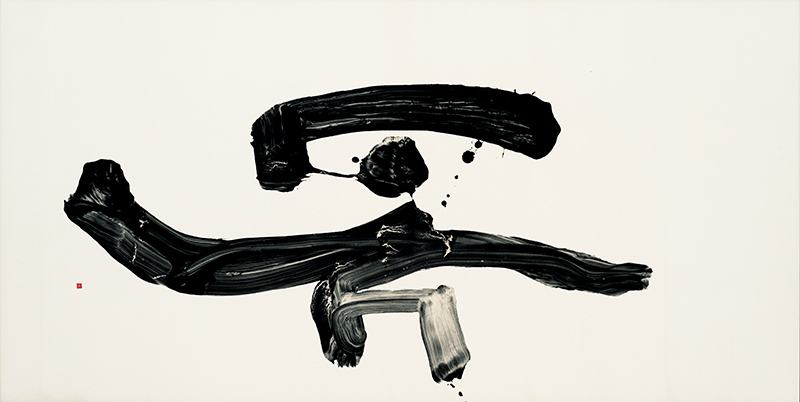
〈Untitled〉(1963-1964) Paper(torinoko-gami)+Sumi(93.8×185)
【reference works】
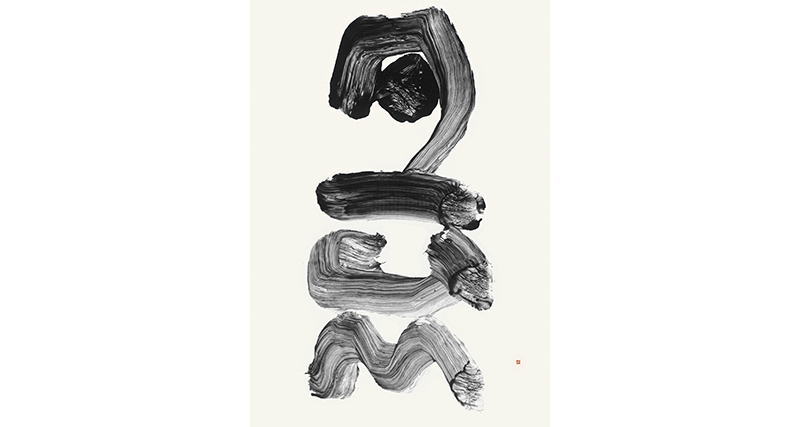
63-10(1963) Paper(torinoko-gami)+Sumi(122×89) (The National Museum of Art,Kyoto)
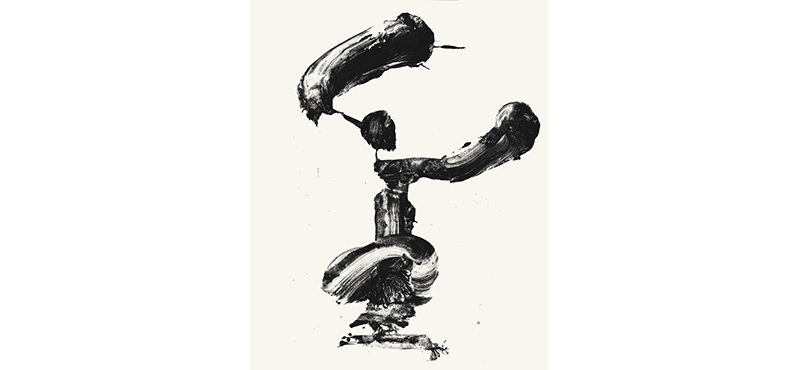
63-14-3(1963) Paper(torinoko-gami)+Sumi(153×121) (MoMA)
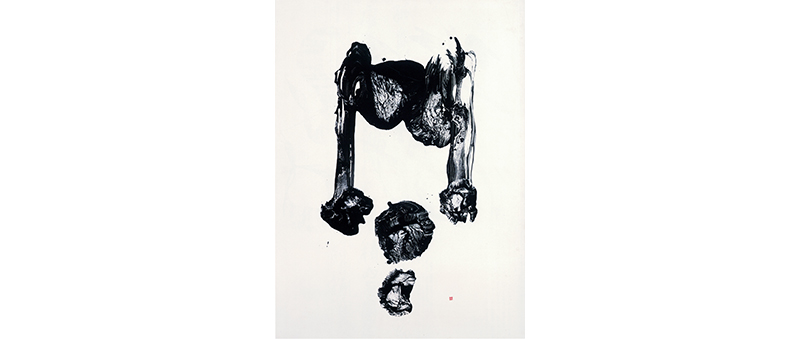
64-25(1964) Paper(torinoko-gami)+Sumi(127×93.5) (The Niigata Prefectural Museum of Modern Art)
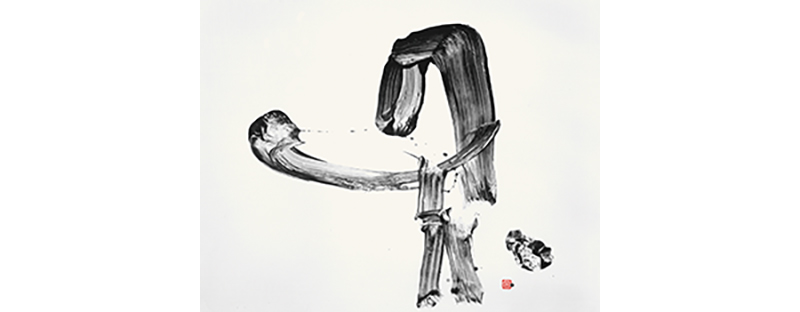
Paper(torinoko-gami)+Sumi,coating acrylic matte varnish (130×162) (Saku City Tenrai Museum)
Ⅵ . Free and flexible lines and exuding humor
Nankoku’s style also changed, shifting from the line expression of strength and weight before and after the first to the third trip to the U.S., to the line that was free and elegant without overly excitement. As a new challenge in the line expression, he was taking on the challenge of creating bold works by capturing the free and flexible lines and the oozing ‘Hitui’(expressiveness of the line) from ancient Chinese " Mokkan (narrow strip of wood )" written directly with a brush. There are also very humorous works inspired by spiral lines and curves.
【reference works】

67-3 (1967) Paper (torinoko-gami)+Sumi,coating acrylic matte varnish (103×73)
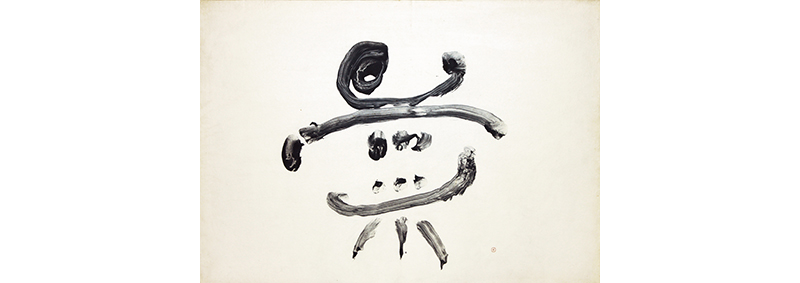
68-1 (1968) Paper (torinoko-gami)+Sumi,coating acrylic matte varnish (130×162)
Ⅶ.The line that resonates and echoes in the space
From 1974 to 1980, his style changed extremely, and he presented small works in which dots and lines were arranged in a wide space. At first glance, it looks like a simple dot or line, but the calligraphy lines that had been trained over many years create a profound sound in response to the space. The movement of a few quiet lines written in a large space expresses the movement of Nankoku's mind, and it is a work that leaves a deep impression on the viewer.
【reference works】
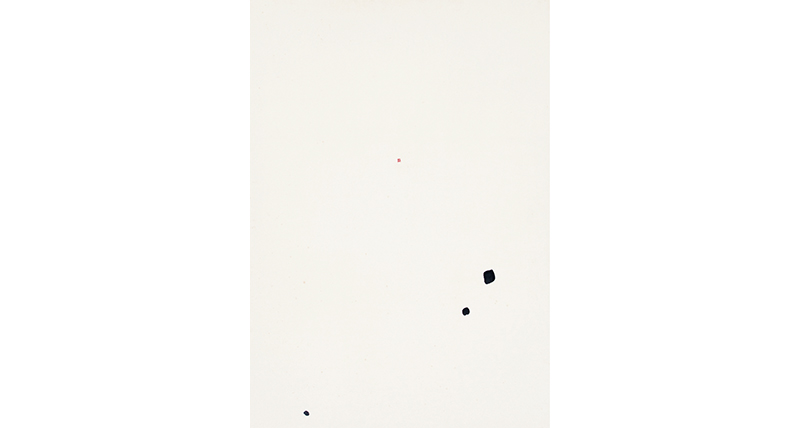
80-1 (1968) Paper (torinoko-gami)+Sumi,coating acrylic matte varnish (103×73)
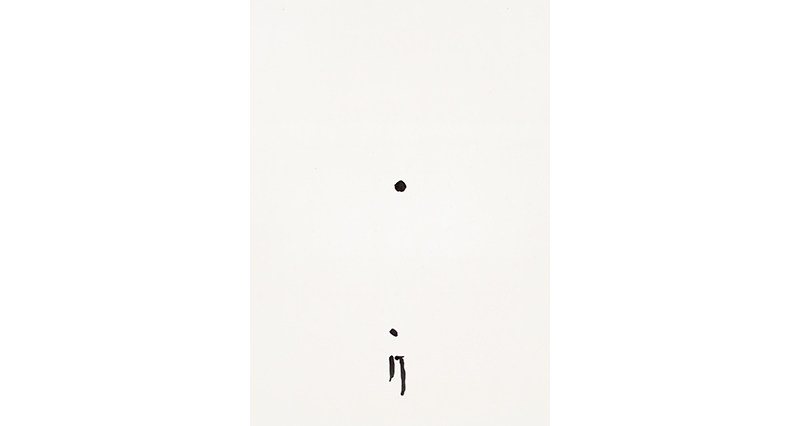
79-1B (1968) Paper (torinoko-gami)+Sumi,coating acrylic matte varnish (103×73) (M+ Hong Kong)